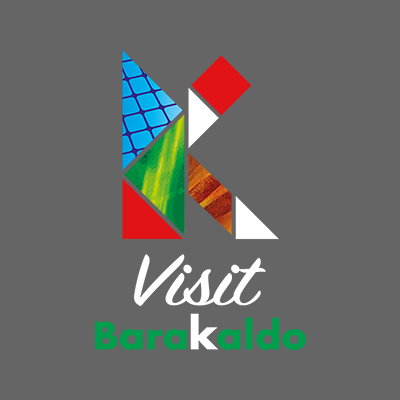It makes a triangle with three distinct vertexes: Herriko Plaza square, Los Hermanos park and Bide Onera square. Inside, a whole maze of streets forms the nerve centre, a heart with multiple arteries coming from it, characteristic of a sprawling city as Barakaldo. An area worth a visit, as it takes many of the services, as well as shops and catering establishments of the town.
Herriko Plaza
Our tour begins in the most emblematic place in Barakaldo, the Herriko Plaza square, where the City Council and a usual meeting point for its citizens is located. A major remodelling has made of it a benchmark to take all kinds of events, as well as a quiet space in which you can calmly gaze at the throb of a dynamic city in constant motion. The clock tower and the pavilion (N. 1) are its most special elements, together with Lucas Alcalde’s sculpture, `Monumento a la Industria’. Nearby, two other buildings proudly exhibit their appearance: the building that takes the old market, `Mercado de Abastos’, and Teatro Barakaldo theatre.
From Herriko Plaza, we continue our journey through Juntas Generales street. Soon we find two of the most traditional roads of Barakaldo.
Zaballa y Juan de Garay
This is Zaballa street (N.3) (which has as model the entailed state of Santiago de Landaburu Zaballa that existed here in the sixteenth century) and Juan de Garay street (N. 4), one of the longest in the city. In the first one we will find a good selection of shops, countless bars and catering establishments, where you can enjoy delicious `cazuelitas’ `pintxos’. At night, and even more in Juan de Garay, pubs and nightclubs gather the fun of the youngest ones.
On the same street, a building stands out because of its sober elevation: the old slaughterhouse of Barakaldo (N. 5), that was built in 1918 by Alfredo Acebal in Mudejar style, and once restored, is still working today as a municipal school of languages. From here, crossing Encartaciones street, we entered into Los Hermanos park (N. 6), another meeting place for the recreation and enjoyment of young and old, where also the municipal pilota-court is located.
We now take other side of the virtual triangle: Avenida De La Libertad, before leading into Bide Onera square.
Bide Onera
Here out stand the building of the cooperative with the same name as the square, the courthouse, the sculptures of Agustín Ibarrola (N. 7) and one of the elements that have done the most to transform Barakaldo: the subway stops of the second line, with entrances designed by the architect Norman Foster.
Our tour ends with a quiet walk along Paseo de Los Fueros to end again in the Herriko Plaza.



